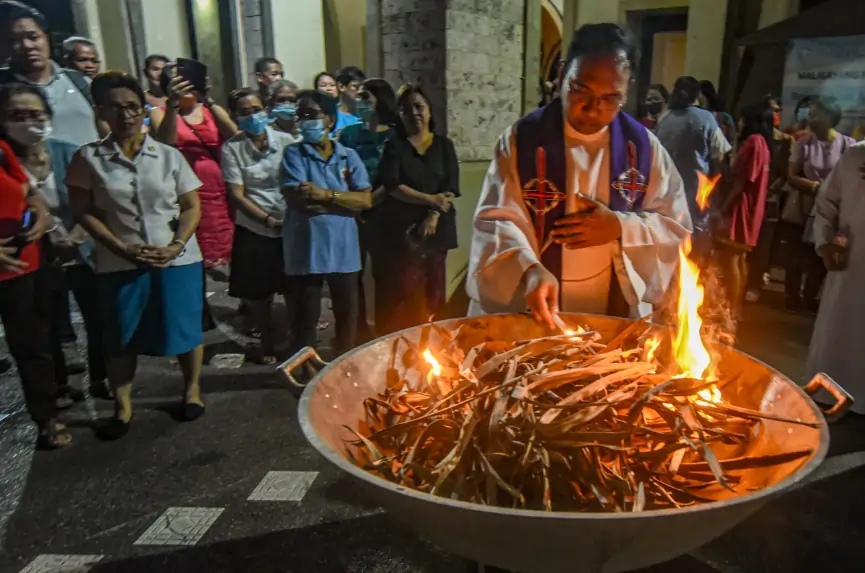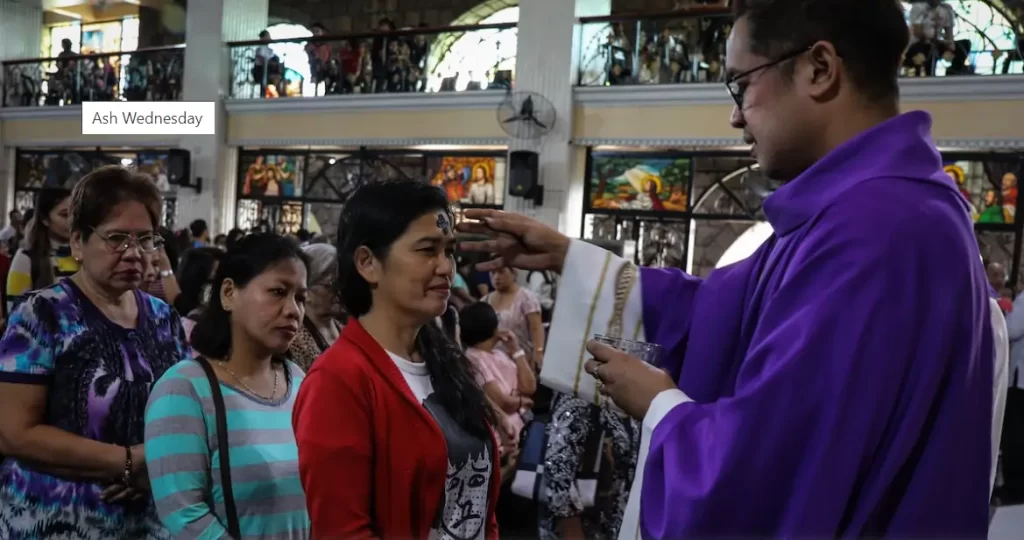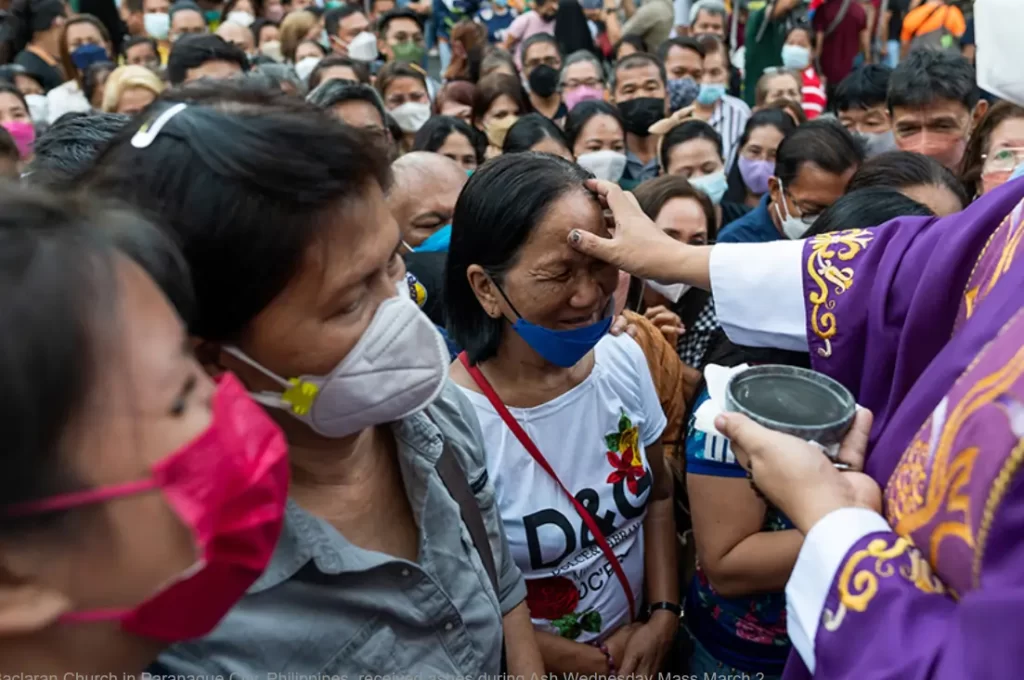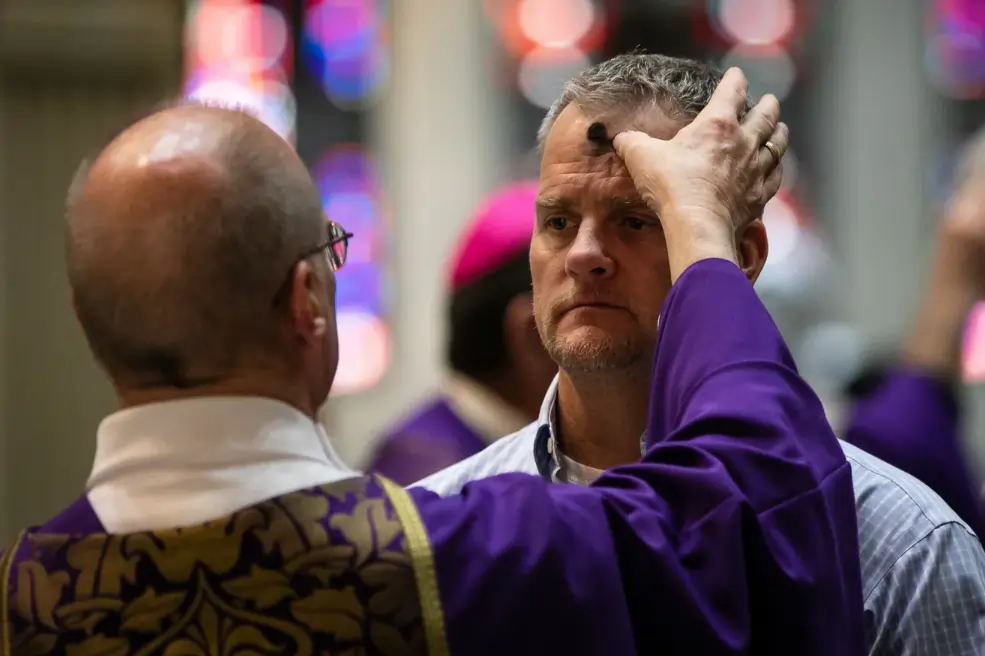
The burning of the palm fronds symbolizes the burning of sins ahead of the penitential season of Lent.
Ash Wednesday A Prelude to Lenten Self-Improvement Traditions
Ash Wednesday stands as a poignant moment in the Christian calendar, known as the “Day of Ashes.” This nomenclature is derived from the ritual of applying ashes in the form of a cross onto the foreheads of the faithful-an outward symbol of humility and penance.
The Latin phrase “Dies Cinerum,” found in Roman Missals, echoes through time, emphasizing the solemnity of this day.
Records from early centuries, present in copies of the Gregorian Sacramentary, affirm the enduring significance of Ash Wednesday. The ashes used on Ash Wednesday carry a profound symbolism, originating from the burnt remains of palm branches blessed during the previous year’s Palm Sunday.
Once symbols of triumph and jubilation, these branches are transformed into ashes, serving as a stark reminder of the ephemeral nature of earthly glory. Often mixed with holy water or chrism oil, the resulting paste becomes a tangible link to spiritual rebirth, a metaphorical phoenix rising from the remnants of the past.
Ash Wednesday serves as a poignant reminder of the inherent mortality of humanity—a solemn call to acknowledge the fleeting nature of life and the imperative to seek reconciliation with the divine. The ash-cross on the forehead symbolizes a commitment to repentance and the pursuit of righteousness.
This initiates a spiritual journey throughout the Lenten season, beckoning believers to deepen their connection with God through prayer, self-discipline, and acts of kindness.

A priest imposes ash on the forehead of Catholics during Ash Wednesday rituals
As Lent unfolds, adherents actively engage in prayer, using it as a vessel to strengthen their connection with the divine. Fasting becomes a deliberate act, cultivating self-discipline and focusing the mind on spiritual matters.
Almsgiving, a practice rooted in ancient traditions, becomes a tangible expression of love and compassion for others, fostering empathy and generosity.
For Christians everywhere, Ash Wednesday marks the start of Lent, a time of great significance. It is a call to embrace the transforming practices of fasting, prayer, and almsgiving for individuals.
A painful reminder is provided by the ashes on the forehead, which stand for humility and mortality.
For Christians, the Lenten season is a perfect opportunity to reflect on their life, ask for forgiveness, and strengthen their bond with God. Lent is a holy journey towards spiritual development and rejuvenation because it ultimately results in a revitalized sense of purpose and a strengthening of faith.

The ritual is commonly held outside church buildings in the presence of praying parishioners.
On this dual occasion of Feb. 14, millions of Filipinos find themselves at the intersection of Valentine’s Day and Ash Wednesday, the symbolic commencement of the Lenten season.
As the nation embarks on this sacred journey marked by the ritual of Ash Wednesday, the profound lessons and significance extend far beyond religious boundaries, resonating particularly with those facing the trials of poverty and limited opportunities.
The ashes applied on foreheads during Ash Wednesday symbolize repentance and mortality, offering a poignant reminder of life’s fragility and our shared human experience.
In a nation grappling with economic hardships, these ashes take on added meaning, becoming a catalyst for introspection and communal solidarity.
The 40-day Lenten period leading up to Easter Sunday provides Filipinos an invaluable opportunity for reflection, reconciliation, and a renewed sense of purpose.
In a country marked by economic challenges, it becomes a collective call to overcome adversity through faith and resilience. For many Filipinos, poverty and limited opportunities are ever-present realities, making the lessons of Ash Wednesday particularly relevant.

This coming Wednesday many Christians will arrive at work with a black cross smudged on their foreheads.
The Ash Wednesday ritual emphasizes humility, urging individuals to acknowledge their flaws and seek redemption. Amid societal struggles, faith emerges as an anchor, providing solace, strength, and a sense of purpose beyond material hardships.
The Lenten season prompts Filipinos to look beyond immediate circumstances, fostering empathy and compassion for those less fortunate.
Receiving ashes on the forehead becomes a visible declaration of one’s commitment to spiritual growth and resilience in the face of societal challenges.It is a call to action, urging Filipinos to channel their faith into meaningful efforts to uplift communities and address the root causes of poverty and inequality.
Numerous Filipinos, particularly those who are impoverished, exemplify bravery in their day-to-day existence by unselfishly overcoming obstacles. These problems are powerfully viewed through the prism of the Lenten season, which inspires a communal commitment to faith, introspection, and solidarity.
Essentially, Ash Wednesday provides Filipinos with a deep understanding of their challenges and victories. It provides a basis for overcoming the difficulties presented by poverty by calling for a communal commitment to faith, introspection, and solidarity.
Filipinos are encouraged to welcome regeneration as the ashes slowly fall, rising from the Lenten season with strengthened spirits and a common resolve to create a society that is more compassionate and just.-skynews.com
